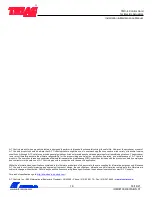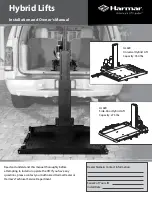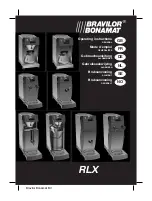
TMC-4 Control Card
for Electric Actuators
Installation & Maintenance Manual
4
03/18/21
www.atcontrols.com
IOM08139 REVISION 01
2. Wiring and Operation
The supply voltage and motor should be connected as
shown in the wiring section. Set the Supply Type Switch
according to the supply voltage and select AC or DC
motor type in the menu settings based on the type of
motor being controlled. The supply voltage and motor
type will typically always match.
When connecting AC supply power, the
supply type switch must be set to “AC” and
when connecting DC supply power, the
supply type switch must be set to “DC”
accordingly
.
Failure to do so may result in
damage to the TMC-4 controller.
MOTOR
For split phase AC type motors, the winding that drives
the actuator clockwise should be connected to the
“Motor CW” terminal, and the winding that drives the
actuator counterclockwise should be connected to the
“Motor CCW” terminal. The motor neutral wire should be
connected to the “Motor N” terminal.
For DC type motors, the wires should be connected to
the “Motor CW” and “Motor CCW” terminals only. When
operating DC motors, the “Motor CW” and “Motor CCW”
terminals switch polarity to the motor. A clockwise
operation will apply the positive supply voltage to the
“Motor CW” terminal, and a counterclockwise operation
will apply the positive supply voltage to the “Motor CCW”
terminal. The motor wires should be connected
accordingly.
BRAKE
An external brake connection is provided to operate
spring return type actuators that use a motor brake to
hold the actuator in position. When the motor is set to
“AC” in the menu settings, the external brake output
remains energized until either of the motor outputs is
activated, at which point, the external brake output
deenergizes. This configuration is for brakes that engage
when powered and disengage when unpowered.
When the motor is set to “DC” in the menu settings, the
external brake output remains deenergized until the
motor outputs are activated, at which point the external
brake output energizes. This configuration is for brakes
that engage when unpowered and disengage when
powered.
HEATER
The TMC-4A002-002 also provides terminals dedicated
to a heater output for connecting a heater and
thermostat. This output is protected by the on-board
fuse. The TMC-4A002-001 does not have dedicated
heater output terminals. It is recommended to connect a
heater and thermostat across the supply power, but it
may be powered by the external brake. The maximum
brake output of rating 300mW, 350V, 120mA continuous
load must not be exceeded.
I/O
Standard analog control inputs for 4-20mA, 0-5V, 1-5V,
0-10V and 2-10V should be connected to the I/O 1
terminal. The 4-20mA input can also be set to sourcing
or sinking through the menu settings. Analog outputs of
0-20mA and 0-10V should be connected to the I/O 2
terminal. This feedback signal is self-powered by the
TMC-4 controller, so no loop power is required by the
user.
In addition to typical analog input control signals, a
+24VDC output is available to drive a single device up to
30mA or use with handheld loop calibrator set as 2-wire
transmitter to locally control the actuator while
conserving battery power. Refer to wiring diagrams in
following section.
The internally su24VDC output can also be used
to drive the I/O 1 and I/O 2 terminals to operate as a
two-position actuator when configured for ON-OFF
command. This can be useful if driving AC motor with
isolated low power command signal. If driving the motor
through limit switches, the actuator can be operated like
a standard on/off, but will not display end of position
unless limit switches are wired to the on-board limit
switch connection header.
The TMC-4 can also be configured to operate off a
variable resistor. Two options exist; one for 0-135Ω to
control off a typical slide wire, and the other for 0-1000Ω
for operating off a typical panel dial.





































